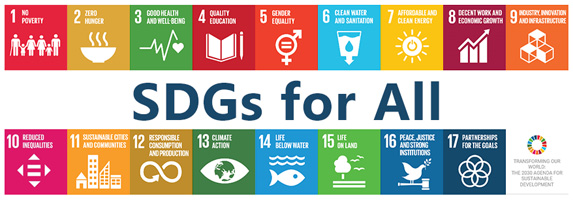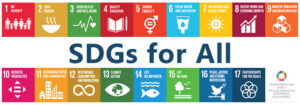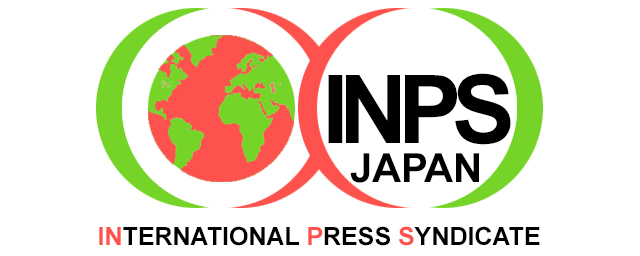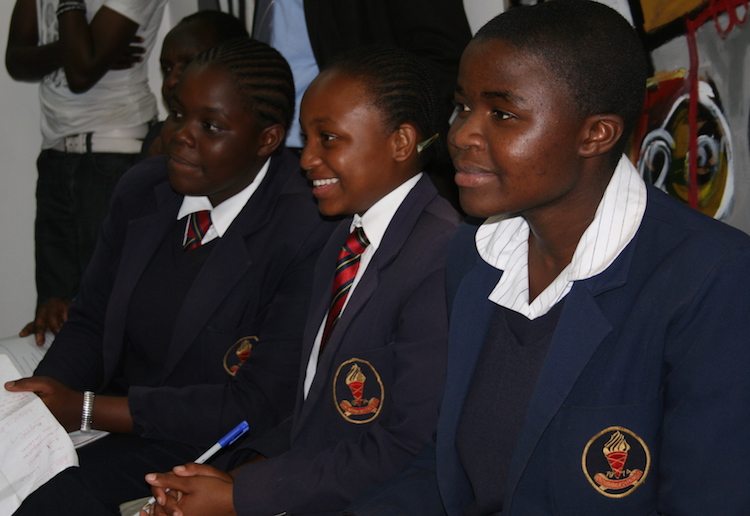Analysis by Jeffrey Moyo
HARARE (IDN) – Despite the hurdles women continue to face in Zimbabwe, this country has made significant headway in achieving gender equality in line with Goal 5 of the Sustainable Development Goals (SDGs) to be attained by 2030.
There is improved women parliamentary representation and increased numbers of girls in university than their male counterparts now – and this as more women have also taken up once male-dominated jobs.
According to UN Women, the United Nations organization dedicated to gender equality and the empowerment of women, women’s representation in Zimbabwe’s Parliament more than doubled from 17 per cent following the 2008 general elections, to 35 per cent in the elections on July 31, 2013. | JAPANESE | SWAHILI
Zimbabwe has joined the ranks of the more than 30 countries the world over that have used a special electoral quota system to increase women’s representation in Parliament to at least 30 per cent, based on assessments by the UN Women.
As a result, there are now 124 female parliamentarians out of the 350 legislators in Zimbabwe’s new Parliament which also includes 86 women in the National Assembly, with 60 in the reserved seats and 26 directly elected to the 210 constituency seats.
In the country’s army too, women have of late been elevated to top positions, not the least because of the support by UN Women Zimbabwe country office, which has been assisting government by focusing on the development, empowerment, political participation and safety of women here.
“Zimbabwe has prioritised 10 SDGs including SDG5. Most of the prioritised goals are gender inclusive,” Jelda Nhliziyo, Strategic Advisor Specialist of the UN Women in Zimbabwe, told IDN.
Zimbabwe is a signatory to the ratified international and regional instruments such as the Convention on the Elimination of all Forms of Discrimination against Women (CEDAW), the Southern Africa Development Community Gender and Development Protocol (SADC Gender Protocol), among others.
The Southern African nation in 2013 also adopted a new Constitution that is characterised by strong gender equality and women’s rights provisions, according to the country’s Ministry of Women Affairs, Gender, Gender and Community Development.
“Our government has demonstrated its commitment to the advancement of gender equality and women’s rights through a strong legal and policy framework, and we can safely say we are moving in the right direction in promoting gender equity here,” Nyasha Chikwinya, Zimbabwe’s Minister of Women Affairs, Gender and Community Development, told IDN.
Two years ago, in a milestone for the United Nations in Zimbabwe, the UN Women, ILO, UNDP, and UNFPA launched the country’s first joint programme to promote gender equality and women’s empowerment.
Initiated with the support of the Government of Sweden, the programme is being implemented in collaboration with Zimbabwe’s Ministry of Women Affairs, Gender and Community Development – this as the Southern African nation is party to international and regional instruments for gender equality and the empowerment of women and girls.
As headway towards attaining gender equality, Zimbabwe presently holds about 25 percent representation in public service institutions, with remarkable improvements seen in the Zimbabwe Defence Forces, where women now occupy important positions.
Consequently, for women in the army like Ellen Chiweshe, whose title was group captain and was recently promoted to become the country’s first female air commodore, which is the number three post in the air force of this country, the sky is the limit.
“The sky is the limit. There is nothing that can stop women from attaining high posts,”Air Marshal Perence Shiri, the commander of the Air Force of Zimbabwe, told the state-run Herald newspaper earlier this year.
UN Women Zimbabwe is working closely with the government and civil society to ensure commitments made by the government in Harare are supported and advanced through policy reforms, identification of resource shortfalls that impede women’s development and inclusion.
UN Women here is also on record supporting civil society to empower women politicians and government officials to identify and respond to the needs of Zimbabwe’s downtrodden women in order to enable them access education.
This, according to UN Women, has ensured Zimbabwean women develop at par with their male counterparts, at a time when the African Union is also prioritising the SDGs at both national and regional levels, with gender equality as a cross cutting goal.
The Southern African Development Community (SADC) has also been up for the match to ensure gender equality is fulfilled in Africa as a whole and Zimbabwe in particular.
“SDG Goal 5 on gender equality goes much further than its predecessor MDG 3, with a much stronger emphasis on voice, choice and control,” noted the Southern Africa Gender Protocol Alliance in its note to the SADC Gender Ministers meeting held in Harare in May.
But a top women rights activist here, Catherine Mukwapati, director of the Youth Dialogue Action Network, a democracy lobby group, feels gender equity as per the UNSDG5 continues to be under threat in the country’s remote areas.
“Poverty among rural households remains a hurdle amidst economic migration affecting women and children here, with the women continuing to face political, social and economic inequalities, which have also been aggravated by the gender-specific results of HIV and AIDS,” Mukwapati told IDN.
“Indigenous cultures and traditions still held in high esteem in the countryside have also continued to render all matters related to gender equity an anathema and therefore unrecognised as rural women remain downtrodden in many aspects of life,” added Mukwapati.
Nonetheless, two years ago, the United Nations in Zimbabwe launched the country’s first Joint Programme on Gender Equality, which saw the Swedish International Development Agency contributing over US $5 million intended to accelerate advancement towards women’s empowerment.
Within the same period, Zimbabwe also became a signatory to the Convention on the Elimination of all Forms of Discrimination against Women (CEDAW) and the Southern Africa Development Community Gender and Development Protocol (SADC Gender Protocol).
Mildred Chauke – an 18-year old girl now doing her Advanced Level of Education in Harare, the Zimbabwean capital – says she is a living testimony to the government’s strides to achieve the UN gender equality goal after she received government support to pursue Science education as a female student.
The Advanced Level of Education popularly known as ‘A’ Level in Zimbabwe, is the highest secondary level of education prior to university or college entry.
According to latest figures, released by the country’s Ministry of Higher and Tertiary Education, Science and Technology Development, as of March 11, 2016, the Science, Technology, Engineering and Mathematics initiative had benefitted 3,404 students across the country’s 10 provinces, with 55 percent of these being females. [INPS Japan/ IDN-InDepthNews – 5 June 2016]
Photo: The girl child has become the major beneficiary of the UN SDG5 as Zimbabwe fights to attain the goal. Credit: Jeffrey Moyo | INPS-IDN.




